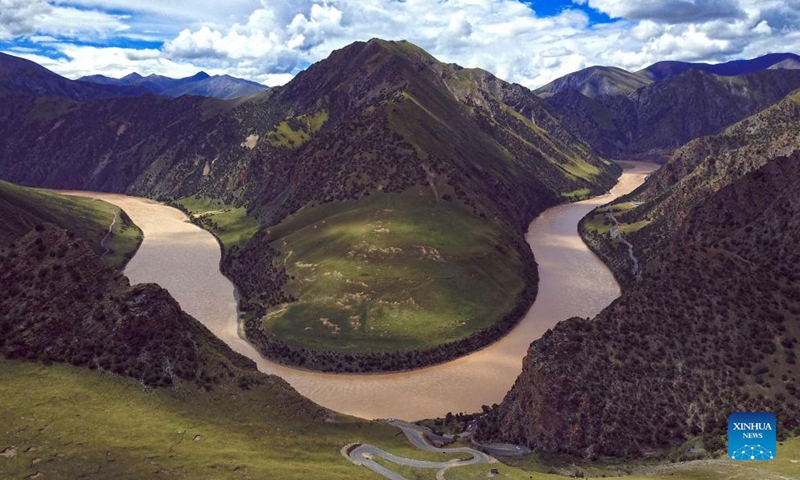China to build world's largest national park system, selecting 49 spots including 13 on Qinghai-Xizang Plateau

Aerial photo taken on August 29, 2018 shows a view of Tongtian River at the Sanjiangyuan National Park in Northwest China's Qinghai Province. Photo: Xinhua
In a key move to build the world's largest national park system, China on Thursday issued a plan for national park layout, selecting 49 candidate areas across the country. Among them, 13 are located on the Qinghai-Xizang (Tibet) Plateau with a total area of about 770,000 square kilometers, accounting for 70 percent of the total coverage of national parks.
The plan, published by the National Forestry and Grassland Administration, is another landmark achievement in the construction of national parks in China, which is of great significance in promoting the construction of the largest national park system in the world.
China's natural ecological geography and functions have been taken into comprehensive consideration, with highlights on the key ecological zones, biodiversity, and typical landscape distributions on the Qinghai-Xizang Plateau, the Yangtze River Basin and the Yellow River Basin.
The 49 candidate areas include five already established national parks, with 44 in land area, two in the land and sea integration area and three in the sea area, covering a total of about 1.1 million square kilometers. Land area takes up about 990,000 square kilometers and sea area about 110,000 square kilometers.
Upon completion, China will have the largest scale of national park protection zone in the world.
Among the 49 spots, 13 are located on the Qinghai-Xizang Plateau and form a national park cluster that account for 70 percent of the total coverage of national parks.
Nine candidate areas are laid out in the Yellow River basin and 11 in the Yangtze River basin, with a total area of about 320,000 square kilometers.
The national park layout covers forests, grasslands, wetlands and deserts, involving more than 700 nature reserves, 10 World Natural Heritage sites and 2 Mixed Cultural and Natural Heritage sites.
Within these areas, more than 5,000 species of wild vertebrates and 29,000 species of land plants are distributed, protecting over 80 percent of national key protected wildlife species and their habitats, as well as numerous large-scale ecological corridors.
At the just-concluded UN biodiversity conference COP15, a landmark deal set to reverse environmental destruction and preserve global biodiversity over the next decades was adopted by nearly 200 countries.
The deal sets the target of effective conservation and management of at least 30 percent of the world's lands, inland waters, coastal areas and oceans, with emphasis on areas of particular importance for biodiversity and ecosystem functioning and services, according to the final release the Secretariat of the Convention on Biological Diversity sent to the Global Times.
Global Times
